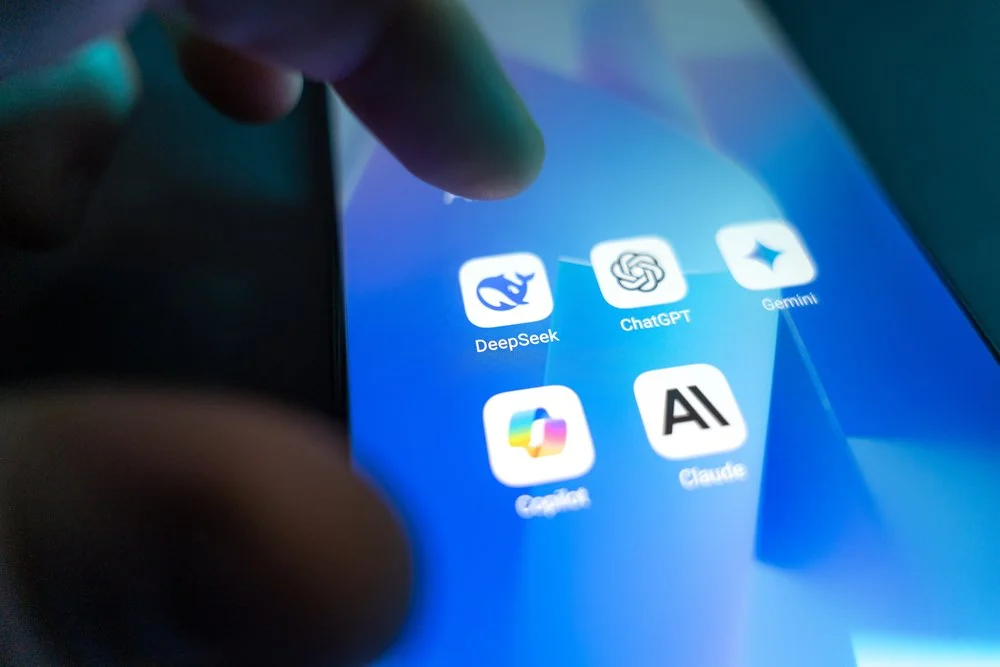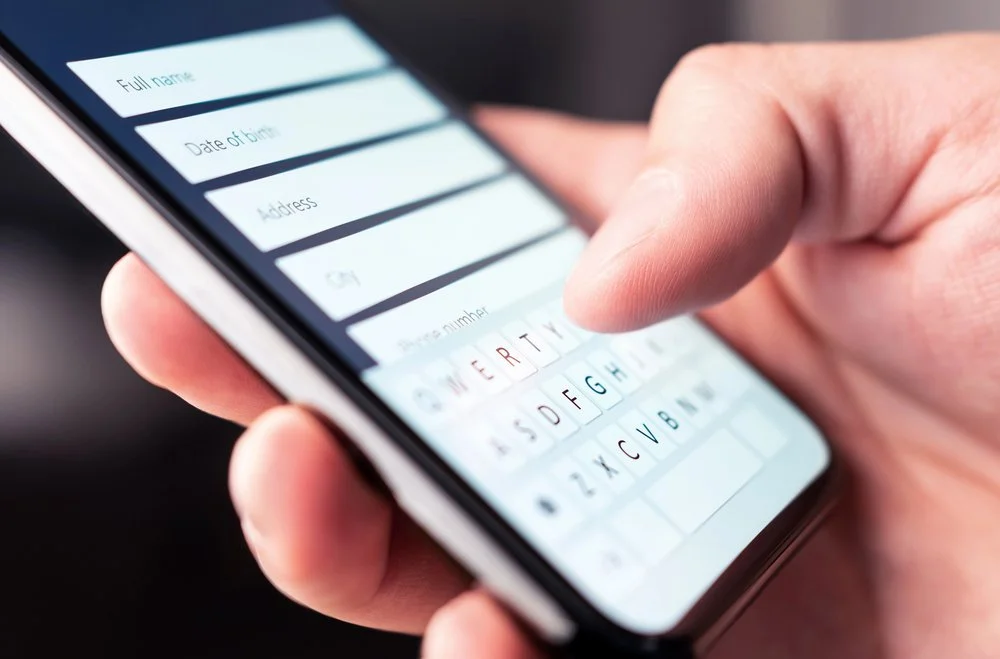A Guide to Crafting a Compelling Nonprofit Brochure (Plus 25 Inspiring Quotes)
As a nonprofit organization, you have a critical mission to fulfill, and the right marketing materials can make all the difference in spreading your message and engaging potential supporters. While I'm often discussing digital marketing resources in this space, a well-designed print brochure is a powerful tool, allowing you to showcase programs, highlight impact, and inspire others to get involved.
My goal is that this resource will walk you through the essential elements of a nonprofit brochure, and provide a collection of inspiring quotes that can be used to help craft a brochure that truly represents your organization and its mission. Whether you're a seasoned nonprofit professional or just starting out, this guide will give you the tools you need to create a brochure that will help your organization make a lasting impact.
(Want a template to create your own nonprofit brochure that grows your credibility and builds your brand identity? Keep reading for the link below to get your own template via email!)
What type of brochure should a nonprofit use?
We've already established that brochures are an essential marketing tool for any nonprofit organization, as they provide a simple and cost-effective way to communicate important information about the organization’s mission, services, and impact to a wide audience. However, with so many different types of brochures available, it can be difficult to know which type is best for your nonprofit.
Let's look at the different types of brochures that nonprofit organizations can use, and the pros and cons of each.
Tri fold brochure
Tri fold brochures are one of the most common types of brochures and are named for their ability to fold into three sections. These brochures are ideal for providing an overview of your organization’s services and mission. Tri fold brochures are often used as a leave-behind after an event or meeting, or as a mailing piece to a targeted list of prospects.
Pros:
Affordable and easy to produce
Portable and easy to distribute
Provides enough space for text, images, and graphics
Cons:
Can become cluttered if there is too much information included
Limited space for in-depth informationBi-fold brochure
Bi-fold brochures
Bi-fold are similar to tri fold brochures, but they fold in half instead of thirds. These brochures are often used as a handout at events or as a marketing piece for a specific program or service, often distributed to existing donors who are asked to share them.
Pros:
Affordable and easy to produce
Portable and easy to distribute
Provides enough space for text, images, and graphics
Cons:
Limited space for in-depth information
Can become cluttered if there is too much information included
Z-fold brochure
Z-fold brochures are similar to bi-fold brochures, but they fold in a zigzag pattern, creating a more dynamic and eye-catching layout. These brochures are often used as a marketing piece for a specific program or service and can provide more space for in-depth information compared to a bi-fold or tri-fold brochure.
Pros:
Provides more space for in-depth information
Dynamic and eye-catching layout
Cons:
More expensive to produce compared to a bi-fold or tri-fold brochure
Can be more difficult to handle and distribute
Gatefold brochure
Gatefold brochures are a type of brochure that folds in on itself, creating a gate-like appearance. These brochures are often used for special events or campaigns and can provide more space for in-depth information compared to a bi-fold or tri-fold brochure.
Pros:
Provides more space for in-depth information
Unique and eye-catching design
Cons:
More expensive to produce compared to a bi-fold or tri-fold brochure
Can be more difficult to handle and distribute
Booklet brochure
Booklet brochures are a type of brochure that is similar in design to a small book. These brochures are ideal for providing a comprehensive overview of your organization’s services and mission and can be used as a resource for a potential donor, grant funders, or other high-end target audience. Because of their size and quality, they often include your strategic plan, fundraising goal for a specific campaign or program, and tell your nonprofit story in a comprehensive way.
Pros:
Provides a comprehensive overview of your organization’s services and mission
Can be used as a resource for your supporters
Cons:
More expensive to produce compared to a bi-fold or tri-fold brochure
Can be more difficult to handle and distribute
Regardless of which type of brochure layout you use, there are some common elements that every brochure should include:
Every nonprofit brochure should include the following 10 elements:
Your organization's mission statement and/or vision statement
This is where you clearly state the purpose of your nonprofit and why you exist. However, it's not the time to be super formal and ultra boring about it. Instead of adding a section that says “Mission Statement,” include this text in a creative way. The same principle applies to your vision statement. Readers tend to gloss over these sections so by including them in a new format or within an “About Us” section that offers the same information in a new way, you'll get your point across more effectively.
Related reading: What's the difference between a mission statement and a vision statement
Background information
Provide some background information about the organization, including its history, key achievements, and current programs. Again, while these are great sections to include, you don't need to spell them out word for word and make your brochure fodder for bedtime reading. Use creative text to weave in the information, breaking it up with graphics, visual cues, and other interesting design choices.
Programs and services
Highlight the main programs and services you offer and give the reader enough information to understand why those services and programs are relevant to them. It's likely that you offer more than 3-4 core services; in this case, it's fine to highlight your primary offerings and then add a sentence or two that directs them to your website for more information. Break up long pieces of information using bullet points and other design elements.
Impact stories
Share real-life examples of how your organization has made a positive impact on the community you serve and the recipients of your programs. You can do this through using quotes, short anecdotes or retelling measurable outcomes that reference real services you've implemented. Don't let this be an after thought - a potential donor is more likely to be moved by a story than by your mission statement alone.
Call to action
Nearly every marketing piece your organization creates has an underlying purpose related to fundraising. Creating a nonprofit brochure that lists everything you do without asking prospective donors to take the next step. is frankly a waste of resources. Encourage the reader to get involved by making a donation, volunteering, or spreading the word about your organization. Since space is likely limited on a small brochure, use creative tools like a QR code to give readers a shortcut to doing more.
Related Articles: 7 corporate partnership ideas using your QR code
Contact information
Provide accurate contact information, including the organization's website, phone number, and social media handles but don't feel obligated to make this section overly large. As long as the information is readable and well-organized, you've satisfied the bill.
Images and graphics
Use high-quality images and graphics to help tell your story and break up text-heavy sections with visuals. Be careful to use images you've licensed and not random ones you've lifted from Google (that's illegal and harmful to creators). If you don't have a subscription to quality stock photos, using the Canva Pro version gives you access to thousands of great images to use in your designs. In fact, the nonprofit brochure template inside the Nonprofit Template Library was created in Canva and uses all Canva Pro images and elements.
Quotes, Testimonials, and Social Proof
Include testimonials from stakeholders, volunteers, or donors to showcase the impact of your work and build trust with prospective donors. Be sure to get permission to use the quotes and include at least a first name as the source. You may also want to use some inspiring quotes in your brochure so I've added a section below with 25 quote ideas for your nonprofit to use.
Financial information
On your website, you should also provide transparent and up-to-date financial information, including the organization's budget, sources of funding, and recent audited financial statements. However, with limited space in your brochure, it's fine to limit to financial information to just the highlights, including either some examples of how you use your funding, campaign goals (as long as they are presented in a manner relevant to the reader), etc.
Consistent Branding
While this one is related to the content per se, it's equally important. Use consistent branding, including the organization's logo, colors, and typography, to create a professional and cohesive look for your brochure design.
25 inspirational quotes for your nonprofit brochure
Sometimes you just need that perfect inspirational quote that balances out your marketing piece - whether's it's a sub-headline, that awkward spot that needs something but you're not sure what, etc.
Here are 25 quotes and their sources to use for your next nonprofit marketing project:
"Success is not final, failure is not fatal: it is the courage to continue that counts." - Winston Churchill
"Change will not come if we wait for some other person or some other time. We are the ones we’ve been waiting for. We are the change that we seek." - Barack Obama
"The purpose of life is not to be happy. It is to be useful, to be honorable, to be compassionate, to have it make some difference that you have lived and lived well." - Ralph Waldo Emerson
"We make a living by what we get, but we make a life by what we give." - Winston Churchill
"Never underestimate the difference you can make in the lives of others. Step forward, reach out and help." - Dr. Robert Watts
"We cannot solve our problems with the same thinking we used when we created them." - Albert Einstein
"The only way to do great work is to love what you do." - Steve Jobs
"Be the change you wish to see in the world." - Mahatma Gandhi
"We cannot help everyone, but everyone can help someone." - Ronald Reagan
"No act of kindness, no matter how small, is ever wasted." - Aesop
"The best way to find joy is to bring happiness to others." - Roy T. Bennett
"The greatest glory in living lies not in never falling, but in rising every time we fall." - Nelson Mandela
"The best and most beautiful things in the world cannot be seen or even touched - they must be felt with the heart." - Helen Keller
"Believe you can and you're halfway there." - Theodore Roosevelt
"Happiness is not something you postpone for the future; it is something you design for the present." - Jim Rohn
"Never doubt that a small group of thoughtful, committed citizens can change the world; indeed, it's the only thing that ever has." - Margaret Mead
"A life spent making mistakes is not only more honorable but more useful than a life spent doing nothing." - George Bernard Shaw
"The greatest gift you can give someone is your kindness." - Roy T. Bennett
"In the end, we will remember not the words of our enemies, but the silence of our friends." - Martin Luther King Jr.
"Leadership is not about being in charge. It's about taking care of those in your charge." - Simon Sinek
"What we have done for ourselves alone dies with us; what we have done for others and the world remains and is immortal." - Albert Pike
"Success is not the key to happiness. Happiness is the key to success." - Albert Schweitzer
"Be the kind of person that makes others step up their game." - Unknown
"Successful and unsuccessful people do not vary greatly in their abilities. They vary in their desires to reach their potential." - John Maxwell
"Leadership is the capacity to translate vision into reality." - Warren Bennis
What's the one quote I don't recommend? "The best way to find yourself is to lose yourself in the service of others." - Mahatma Gandhi
We all know it's been overused and I'd skip it if I were you.
Final Thoughts About Nonprofit Brochures
In summary, nonprofit brochures are a powerful tool for sharing information about your organization’s mission, services, and impact. By carefully considering your target audience and the type of information you want to convey, you can choose the right type of brochure that will effectively communicate your message and inspire support. Additionally, incorporating eye-catching graphics, inspiring quotes, and a clear call-to-action can help you engage your audience and drive meaningful action.
Like every marketing endeavor, creating an effective nonprofit brochure requires careful planning, attention to detail, and a clear understanding of your target audience. By considering the information you want to convey and the type of brochure that will best deliver that message, you can create a powerful marketing tool that will help you reach your goals and inspire support for your organization.
You might find these related posts helpful…






